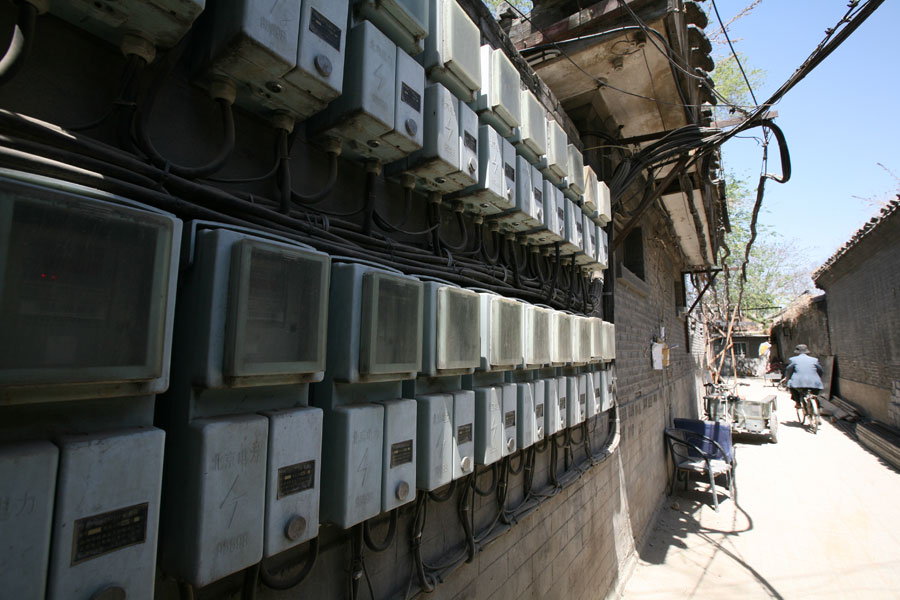Electricity
Most people top up their electricity with an electricity card. In newer buildings, it’s one card per meter and one meter per apartment; in hutong homes, there may be several meters per household. Electricity meters can usually be found in a utility closet on your floor, just outside your apartment, or outside your courtyard in the case of hutong homes. Each meter displays how much money is left. When in doubt, ask your building management or landlord.
For newer apartments with electricity cards, you can top up at an ATM machine or bank counter. The ATM process takes a bit of getting used to since the interface is all in Chinese, but it’s pretty simple once you memorize all the steps. You have to specify how many units of electricity in kilowatt hour you want to buy (more on this below). The new generation of “smart” electricity cards can be topped up directly through Alipay (the Chinese equivalent of PayPal). Here, you’d specify how much money you want to add, not kWh.
Some older hutong homes use a clunkier system where you have to write down the electricity meter number, go to a branch of China Postal Savings Bank, and tell the clerk how much money you want to put on it. Note that you can only pay in cash. (Why this bank? We have no clue.)
The electricity bill can vary significantly every month depending on the season and type of housing. For example, old and badly-insulated hutong houses with electric radiators can eat up a lot of energy in the winter. However, most electric radiators are set to crank up the heat late at night, when the utility costs the least. The price per kWh varies roughly between RMB 0.50 and RMB 0.80 depending on how much electricity you use every month. Get into the habit of tracking your monthly consumption; over time, you’ll be able to gauge how many units you need.
Paying for Electricity
at the Bank
1. You can either pay at the counter or use an ATM. For the first option, take a number and wait. Once you get to the window, give the clerk your electricity card and some money; it’ll be obvious what you’re here for.
2. To top up your card at the ATM, you’ll need to go through a Chinese-language menu. Every bank is a bit different, and not all banks have this option. At China Merchants Bank, for example, you access the menu by selecting “No-Card Option.” You’ll be prompted to enter your China Merchants Bank debit card number and insert your electricity card. Specify how many units of electricity you want to buy. The machine will calculate the cost and you’ll be prompted for your debit card PIN.
3. Keep the receipt in case you ever need to show proof of payment. Generally, this is a good habit to get into in China.
4. Should you lose your card, call the Beijing Electricity Corporation hotline at 95588. Service is available in English.
For the rest of this article, visit our sister site, beijingkids.
This article originally appeared in the 2015 beijingkids Home and Relocation Guide. Click here to read the issue for free on Issuu.com. To find out how you can get your own copy, email [email protected].
Photo: Xinhua News Agency


